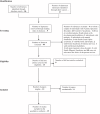The association of ADHD symptoms to self-harm behaviours: a systematic PRISMA review
- PMID: 24884622
- PMCID: PMC4020381
- DOI: 10.1186/1471-244X-14-133
The association of ADHD symptoms to self-harm behaviours: a systematic PRISMA review
Abstract
Background: Self-harm is a major public health issue in young people worldwide and there are many challenges to its management and prevention. Numerous studies have indicated that ADHD is associated with completed suicides and other suicidal behaviours (i.e., suicidal attempt and ideation). However, significantly less is known about the association between ADHD and self-harm.
Method: This is the first review of the association between ADHD and self-harm. A systematic PRISMA review was conducted. Two internet-based bibliographic databases (Medline and CINAHL) were searched to access studies which examined to any degree the association between, specifically, ADHD and self-harm.
Results: Only 15 studies were identified which investigated the association between ADHD and self-harm and found evidence to support that ADHD is a potential risk factor for self-harm.
Conclusion: This association raises the need for more awareness of self-harm in individuals with symptoms of ADHD.
Figures
References
-
- American Psychiatric Association. Diagnostic and Statistical Manual of Mental Disorders. 4. Washington, DC: American Psychiatric Association; 1994.
-
- Babinski DE, Pelham WE, Molina BSG, Gnagy EM, Wasch-busch DA, Yu J, MacLean MG, Wymbs BT, Sibley MH, Biswas A, Robb JA, Karch KM. Late adolescent and young adult outcomes of girls diagnosed with ADHD in childhood: an exploratory investigation. J Atten Disord. 2011;15:204–214. doi: 10.1177/1087054710361586. - DOI - PMC - PubMed
Publication types
MeSH terms
LinkOut - more resources
Full Text Sources
Other Literature Sources
Medical


